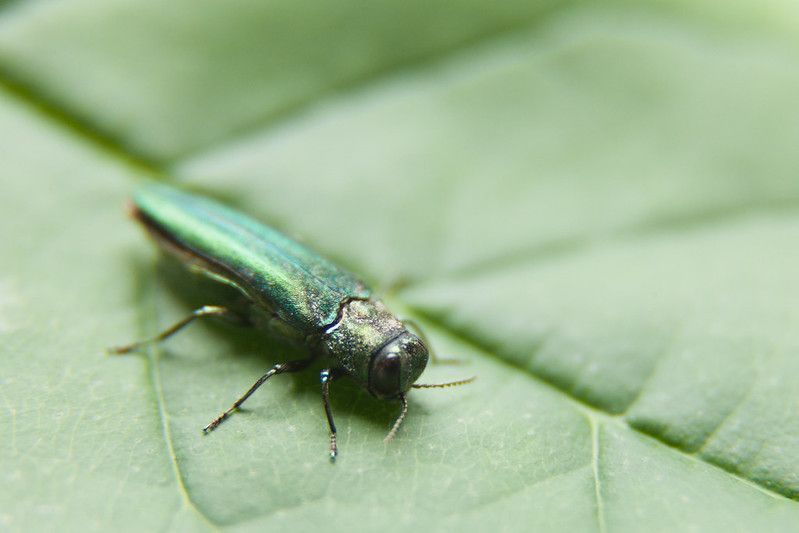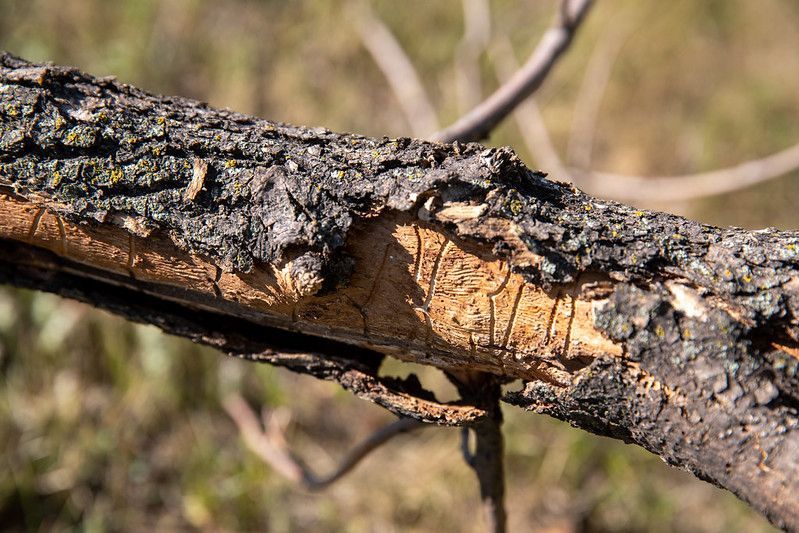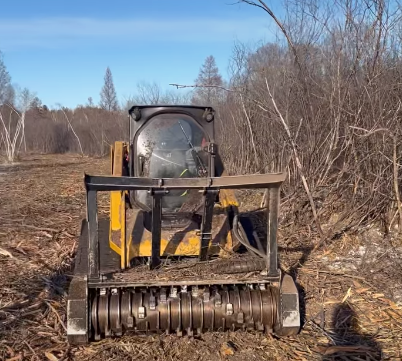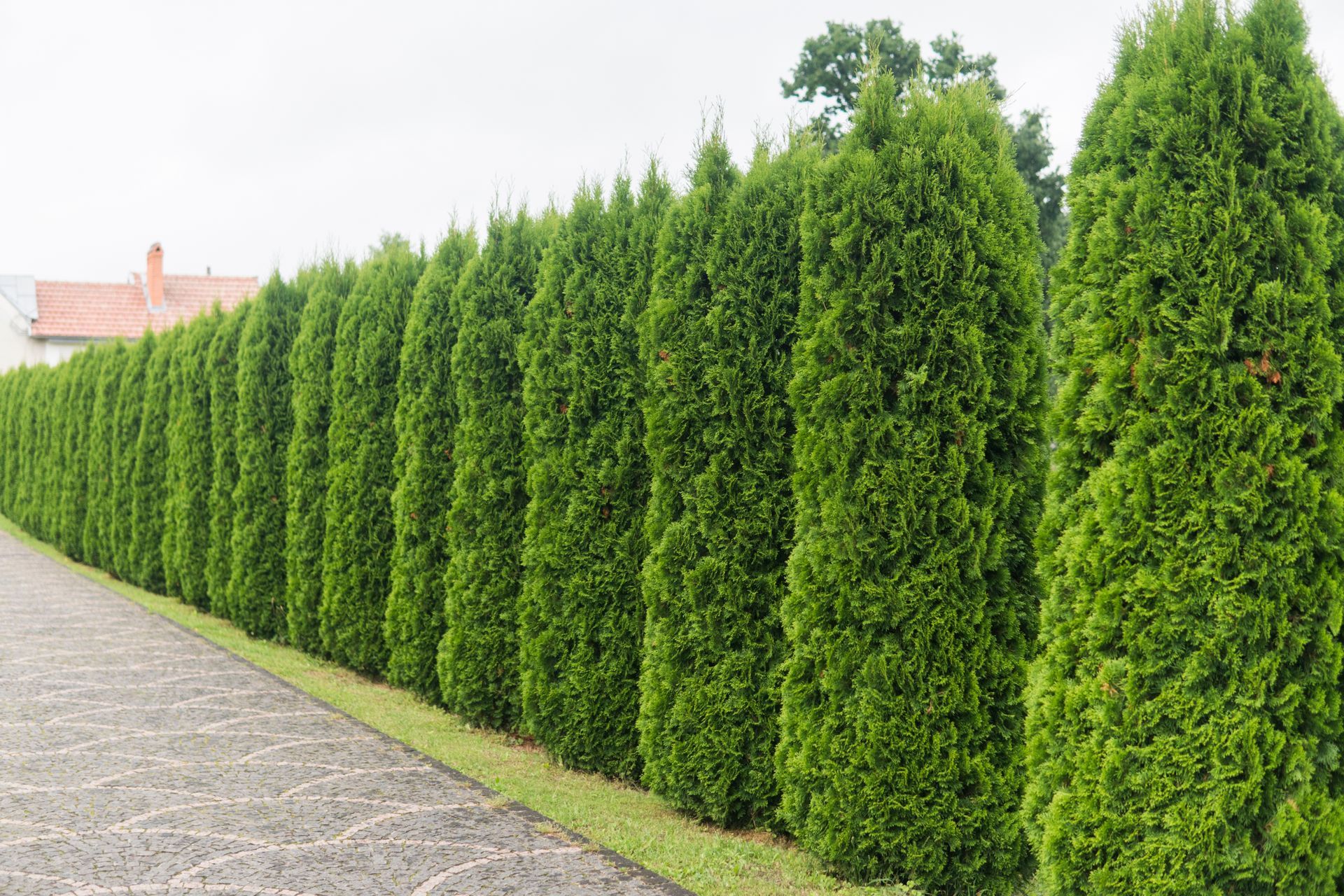
Among the various tree species, the ash tree has been cherished for its strength and resilience. However, the emerald ash borer (EAB) poses a significant threat to these trees. In this blog, we will delve into how the emerald ash borer affects your trees, how to identify an infestation, and the crucial role that professional arborists play in treatment and prevention.
The Emerald Ash Borer: Characteristics
The emerald ash borer, scientifically known as Agrilus planipennis, is a tiny but highly destructive invasive beetle native to Asia. First detected in North America in the early 2000s, it has since spread like wildfire, causing widespread devastation to ash trees throughout the continent.
Its distinctive appearance and coloration make it relatively easy to identify if you know what to look for. Here are some key characteristics of the emerald ash borer:
- Size: Adult emerald ash borers are typically about 0.3 to 0.5 inches (7.5 to 13 mm) in length. They are relatively small insects.
- Color: The most striking feature of the emerald ash borer is its metallic green color. It has a shiny, emerald or jade-green exoskeleton that gives it its name. This bright green coloration sets it apart from many other beetles found in North America.
- Shape: The beetle has an elongated and slightly cylindrical body with a tapered appearance toward the rear. Its body is relatively slender.
- Elytra: The elytra are the hardened wing covers that protect the beetle's wings. On an emerald ash borer, the elytra are green with a series of wavy, irregular lines of a coppery or purplish color. These lines create a distinctive pattern on the back of the beetle.
- Underbelly: If you were to flip the emerald ash borer over, you would notice that its abdomen is also green but may have some bronze or coppery coloring as well. It's worth noting that this part of the beetle is not as commonly seen since the beetle spends most of its life under the bark of trees.
- Legs: The beetle has six legs, which are typically black in color and relatively short compared to its body.
While the adult emerald ash borer is relatively easy to identify due to its metallic green color and unique markings, it's important to note that the larvae, which cause the most damage to ash trees, are not easily seen as they reside beneath the bark. It's the signs of infestation, that are often more noticeable when trying to confirm an emerald ash borer presence.

How Emerald Ash Borer Affects Your Trees
The EAB larvae bore into the inner bark of ash trees, disrupting the tree's ability to transport water and nutrients. This leads to a decline in the tree's overall health and, eventually, death if left untreated. Some key effects of an EAB infestation include:
- Exit Holes: Once the adult beetles emerge, they leave behind distinct D-shaped exit holes in the bark, a telltale sign of EAB activity.
- S-shaped Larval Galleries: Under the bark, EAB larvae create winding, S-shaped galleries as they feed on the tree's phloem and cambium layers, further damaging the tree's vascular system.
- Thinning Canopy: Infested ash trees exhibit a thinning canopy as they struggle to support their branches and leaves. This is often one of the first visible signs of an infestation.
- Dieback: As the infestation progresses, the tree's upper branches may die, and ultimately, the entire tree may succumb to the infestation.
Identifying an EAB Infestation
Early detection is crucial in combating EAB infestations. Homeowners can keep an eye out for the following signs:
- Thinning Canopy: If your ash tree's canopy begins to look sparse or discolored, it may be a sign of EAB infestation.
- D-shaped Exit Holes: Inspect the bark for small, D-shaped exit holes left by adult beetles.
- Sucker Growth: The presence of small branches sprouting from the tree's lower trunk, called suckers, may indicate stress from EAB infestation.
- Woodpecker Activity: Increased woodpecker activity on your ash tree may suggest that they are feeding on EAB larvae beneath the bark.
How a Professional Arborist Can Help With Emerald Ash Borer
When dealing with an EAB infestation, seeking the expertise of a professional arborist is your best course of action. Here's how they can assist you:
- Tree Assessment: Arborists can accurately assess the extent of the infestation and determine the tree's overall health. This evaluation is essential for making informed decisions about treatment or removal.
- Treatment Options: Arborists are well-versed in the various treatment options available, including insecticides, biological control methods, and trunk injections. They can recommend the most appropriate treatment for your specific situation.
- Preventive Measures: Professional arborists can implement preventive measures to protect your healthy ash trees from potential EAB infestations. This includes regular inspections and applying preventive treatments when necessary.
- Tree Removal: In cases where the infestation is severe or the tree poses a safety hazard, arborists can safely and efficiently remove the tree, ensuring minimal risk to your property.
As a homeowner, understanding the signs of EAB infestation and the importance of early detection is crucial. Equally important is enlisting the services of a professional arborist, who can assess, treat, and protect your ash trees, preserving these natural treasures for generations to come. By working together, we can help safeguard our ash trees from the relentless threat of the emerald ash borer.


Submit A Form:
Get In Touch
We are here to help you take care of your tree care needs. Get in touch with us today to schedule your free consultation!
© 2023 All Rights Reserved | North Woods Industries, LLC | Privacy Policy




